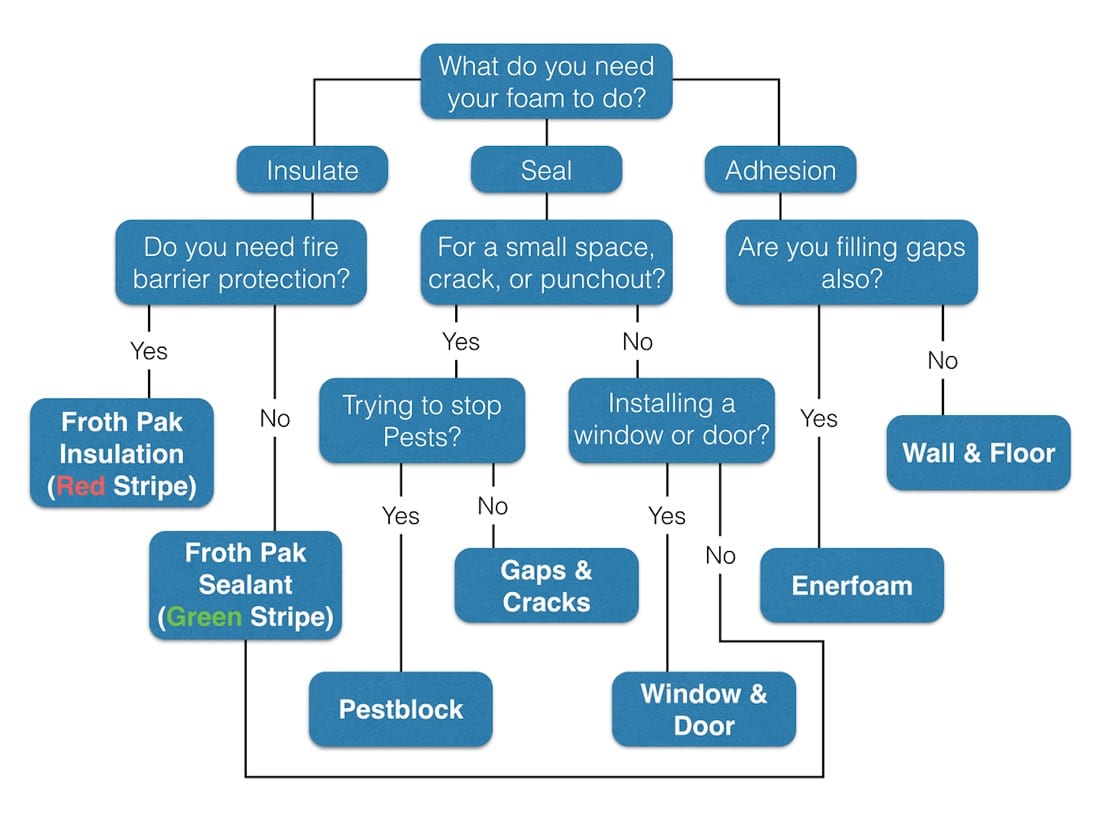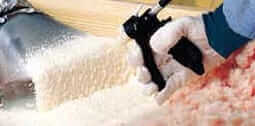AWF Blog
DuPont™ Spray Foam - Everything You Need to Know
Posted by Martin Z. and Dan from AWarehouseFull on May 5th 2021
Let's not waste any time...
DuPont™ Spray Foam comes in 2 types, two-part Froth Pak™ kits and single-part Great Stuff™ sealants.
DuPont™ Froth Pak™ two part polyurethane spray foam kits provide insulation and air sealing that fiberglass insulation cannot match. The typical R values advertised on fiberglass products are based upon perfect installation and do not take into account air leaks. In reality fiberglass batts don't seal gaps where air and moisture can penetrate making your true R value much lower. These leaks mean higher energy costs due to escaping air as well as potential mold problems.
Recently DuPont™ has reformulated all Froth Pak™ products to remove HFCs (powerful greenhouse gases) and make them more environmentally friendly. These Low Global Warming Potential Froth Paks comply with all state environmental regulations and included improvements in overspray reduction, product consistency and tack free time.
Spray foam insulation seals these gaps and prevents air and moisture penetration in wall cavities, rim joists, attic top plates, and more. Eliminate air leaks and you can be sure that you're getting the true R value of your insulating materials. Two-part closed cell spray foams have R values ranging from R-5 to R-6.1 per inch.
Single-part Great Stuff™ sealants are used to fill smaller areas where air and moisture can flow. Great Stuff™ can be used to fill punch outs for plumbing and electrical, air spaces around windows and doors, seal between panels and as a panel adhesive. The use of Great Stuff™ pro cans and a pro applicator gun extends the yield you get from each can and makes application quick, easy and precise.
Besides air sealing, DuPont™ spray foam is excellent at keeping out small pests and insects. Traditional insulation provides a perfect nest for mice, crickets and other vermin. Spray foam eliminates their points of entry and can be a key to reducing pest problems.
What is "Closed Cell Foam"?
Closed Cell Foam is where the cells (bubbles) within the foam are completely enclosed and separated from each other. These closed cells do not allow moisture or air to flow from one cell to another. That's why closed cell foam is a good insulator.
Open Cell Foam has openings between cells which allow air and moisture to flow through the foam. A good example of open cell foam is a sponge. Good for collecting water but not a good insulator.
Why use Closed Cell Foam?
Aside from being a good insulator, closed cell foam products are excellent at sealing gaps and cracks that allow air to sneak past traditional insulation. Closed cell products don't allow water to collect and are recommended where moisture buildup or mold could be a problem.
What Foam do you need?
To better help connect you with the foam you need for your job, we put together this chart to simplify the process.






